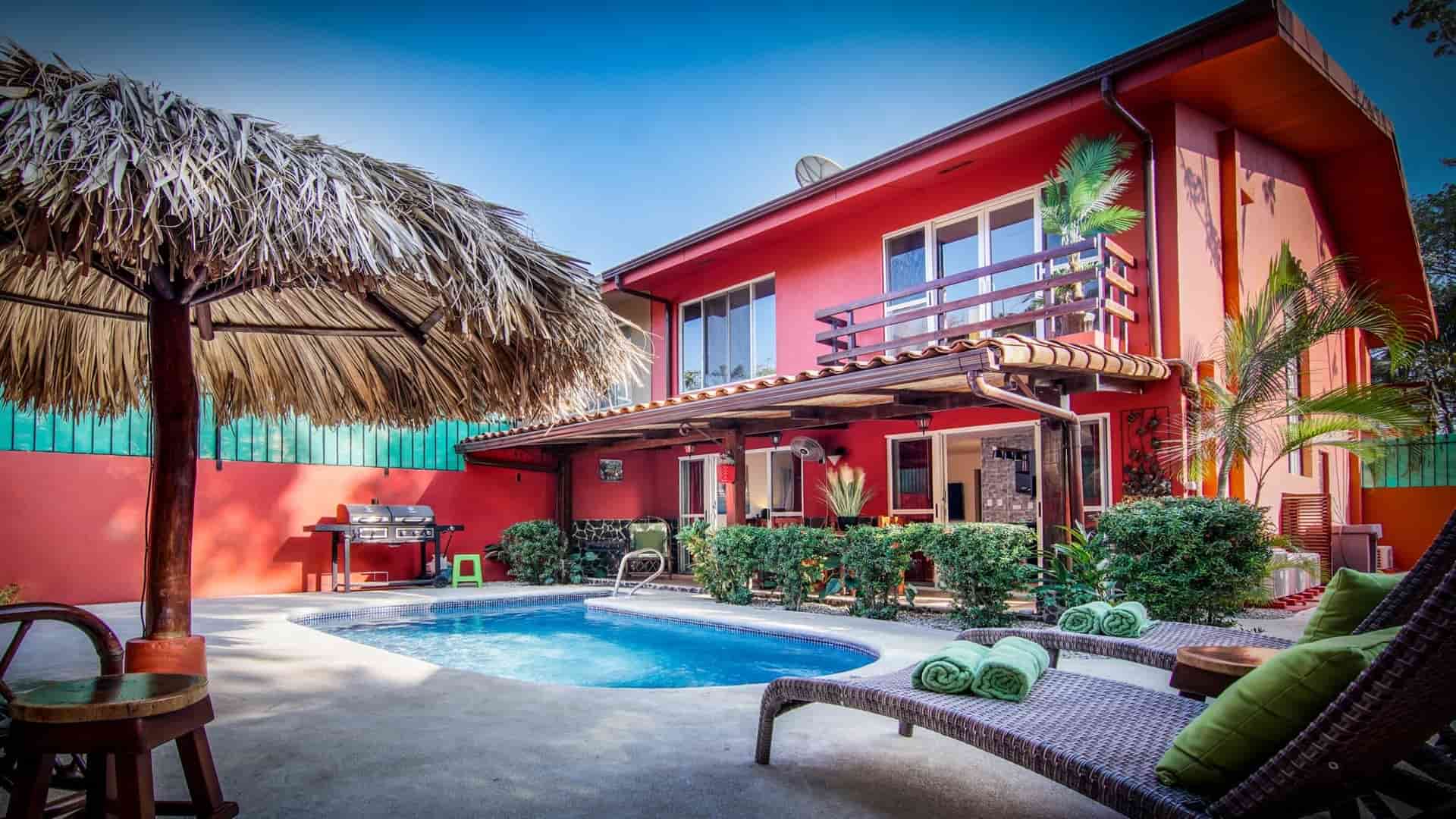Table of contents
Dreaming of swapping city life for tropical beaches and rainforests? Costa Rica is a perfect choice for expatriates seeking a laid-back lifestyle, natural beauty, and warm hospitality. While moving to a new country can be daunting, careful planning can make your transition to Costa Rica smooth and rewarding.
If you visited this Central American country in the past, fell in love with it, and now want to re-enter Costa Rica to become a permanent resident, this article is for you. Below, we provide a comprehensive guide for future expats on moving to Costa Rica, covering legal requirements, cost of living, healthcare, education, and cultural integration.
Whether you’re looking for a serene retirement, a fresh start, or an adventure-filled lifestyle, this guide will equip you with the essential information for a smooth transition to Costa Rica, one of the best countries in Latin America.
#1
First Things First, Why Costa Rica?

For various convincing reasons, Costa Rica is a top choice among expats looking to move abroad. Above all, its unmatched natural beauty—typified by immaculate beaches, verdant rainforests, and various ecosystems—offers the perfect setting for a fulfilled and laid-back way of life.
Furthermore, expats and their families can feel comfortable and welcome in Costa Rica because of its democratic stability, tranquil political atmosphere, and dedication to environmental preservation. Aside from that, the nation’s great healthcare and educational systems and reasonably priced cost of living make it a desirable option for anybody looking for first-rate facilities and services without going over budget.
In addition, Costa Rica’s lively culture, friendly people, and a strong sense of community help foreigners feel connected and at home, making adjusting to living in this tropical paradise easy and delightful.
#2
Planning Your Relocation

Before embarking on your relocation journey to Costa Rica, conducting thorough research and developing a comprehensive plan is essential. Here there are our initial suggestions:
Researching and Understanding Costa Rica’s Culture, Language, and Lifestyle
Speaking Spanish (the official language) is a worthwhile endeavor that will enhance your experience in Costa Rica. It will help you better understand local norms and traditions, communicate more assertively, and develop a stronger sense of community in the local culture.
Familiarize yourself with the “Pura Vida” (pure life) mindset, local food, and outdoor activities, which contribute to a carefree, upbeat lifestyle. This cultural perspective will enhance your stay and make your move to Costa Rica much more enjoyable.
Assessing Residency Options and Immigration Requirements
When planning to move to Costa Rica, assessing residency options and understanding immigration requirements are crucial steps.
Costa Rica offers several residency options, including the Pensionado (Retiree) Program, Rentista Program, Investor Program, and the Digital Nomad Visa, each catering to different needs and financial situations. The Pensionado Program is designed for retirees, requiring proof of a stable pension income of at least $1,000 per month. The Rentista Program is suitable for individuals without a pension but with a steady income of at least $2,500 per month for two years or a $60,000 deposit in a Costa Rican bank. The Investor Program requires a minimum investment of $150,000 in a Costa Rican business or property. Understanding which program aligns with your circumstances is essential for a smooth application process.
Gathering Necessary Documentation and Paperwork
In addition to selecting the appropriate residency program, familiarizing yourself with the immigration requirements and processes is vital.
The relocation process to Costa Rica involves gathering necessary documents such as a passport, birth certificate, marriage certificate, criminal record certificate, financial statements, income or pension evidence, and health insurance coverage. If you’re entering initially on a tourist visa, you’ll need to ensure you have the correct documents to transition to residency.
Depending on the residency program you have chosen, additional financial documentation, such as bank statements, proof of income or pension, and investment papers, may be required. You will also need to provide proof of health insurance coverage, as residency applications demand it. Validating and translating these documents into Spanish is crucial, either through apostille or notarizing through Costa Rican consulates. Proper organization speeds up the application process.
An Outline for Submitting a Residence Application
To apply for residency in Costa Rica, one must follow a methodical, sequential process:
- Start by choosing the residency program—Pensionado, Rentista, or Investor—that best suits your circumstances.
- Obtain the necessary paperwork, such as your birth certificate, passport, police clearance, bank account records, and evidence of health insurance.
- Make sure all of the paperwork is validated and translated into Spanish.
- Send your application and required payments to the Costa Rican Department of Immigration, Dirección General de Migración y Extranjería.
- Keep all scheduled appointments and interviews, and supply more information upon request. Your residence card (DIMEX), which you must regularly renew in accordance with the program’s guidelines, will be issued to you after you are authorized.
- Speak with an immigration professional to make sure all legal criteria are met and to expedite this procedure.
Processing Timelines
Costa Rica’s residency processing timelines vary depending on the type of residence sought. Temporary residency applications take six to twelve months, while permanent ones may take up to a year. Be aware that delays can occur due to regulations, administrative backlogs, or additional information requirements.
#3
Making a Budget and a Financial Strategy for Moving Costs
To prepare to move to Costa Rica, it is highly advisable to prepare a thorough financial plan and budget. Prepare a budget for the costs of the processes, travel, luggage handling, first-time housing charges, setup fees for new services, and any other expenses related to language learning, legal counseling, or cultural adjustment. This will ensure a smooth transition and prevent financial pressure.
#4
Typical Difficulties in Obtaining Residency Status in Costa Rica and Strategies to Overcome Them

Becoming a permanent resident of Costa Rica often involves navigating complex paperwork and documentation requirements, understanding changing immigration regulations, and managing potential processing delays.
To overcome these challenges, applicants should first ensure they have all the necessary documentation prepared well in advance and conduct a comprehensive inquiry into the specific requirements for the residency category they have selected.
Current regulations might be clarified and the application process sped up by consulting with reputable attorneys or immigration specialists. It is critical to stay up to speed on any revisions or modifications to policy from official immigration agencies.
Additionally, delays can be minimized by maintaining contact with the relevant authorities and promptly attending to any requests for additional information.
Perseverance and patience are crucial, even if the procedure takes a while. However, aggressive participation and meticulous planning can significantly increase the chances of success.
Subscribe to our newsletter
to stay up to date
#5
Finding Your Home

Finding a new place to live in Costa Rica is the next step after obtaining your temporary visa or resident status. Costa Rica has a wide variety of housing alternatives to fit every lifestyle and budget, whether you’re looking for a contemporary condominium in a city in the Central Valley, a coastal house, or a mountain getaway in a popular tourist destination.
When examining your possibilities, consider elements like location, facilities, and housing costs (renting or buying). To make the process go more quickly, contact respectable real estate brokers or property management firms.
Exploring Different Regions and Cities in Costa Rica
Investigating different towns and localities while considering a move to Costa Rica requires exploring the nation’s varied options in-depth.
Every place has advantages of its own, from the bustling capital of San Jose with its modern conveniences and cultural attractions to the coastal gems like Manuel Antonio, Tamarindo, Flamingo, and Jaco, to name a few, which are renowned for their expat communities and beach lifestyles. The Caribbean coast offers stunning rainforests and Afro-Caribbean culture, while the highlands around Heredia and Alajuela offer easier access to coffee estates and warmer temps. Doing a thorough examination of Costa Rica’s different areas—which suit a range of lifestyles, whether one is drawn to the tranquility of the beach, the bustle of the city, or the serene countryside—is essential before deciding to migrate.
Renting vs Purchasing and Overall Factors to Consider
Choosing between renting and purchasing a home in Costa Rica involves weighing several factors. Renting offers flexibility and lower initial financial commitment, ideal for those uncertain about long-term plans or wishing to explore different regions before settling down.
Purchasing, on the other hand, provides stability and potential investment returns, especially in popular tourist areas experiencing property value appreciation. Working with real estate agents and property management companies such as Special Places of Costa Rica can simplify the process by providing local expertise, access to listings, and assistance with legal complexities.
Factors to consider when choosing a home include the location’s proximity to amenities like schools and healthcare, desired lifestyle (urban, beachfront, rural), budget constraints including maintenance costs and property taxes, and availability of desired amenities such as security, utilities, and recreational facilities. Evaluating these factors comprehensively ensures finding a home in Costa Rica that aligns with both practical needs and personal preferences.
#6
Navigating Healthcare in Costa Rica
It is essential to know how to navigate Costa Rica’s dual healthcare system, which offers both public and private options. Registration in the Costa Rican Social Security Fund (CCSS) is required for residents who wish to use it. This public health system offers full coverage, including primary care, hospital services, and pharmaceutical products. Private healthcare requires the purchase of your own health insurance or payment in cash. It is frequently chosen for its lower wait times and staff who understand English. In Costa Rica, obtaining medical services and specialists generally involves direct visits to private doctors or referrals through the CCSS.
#7
Education Alternatives
There are many different educational alternatives available in Costa Rica, such as foreign, private, and public schools. While private schools charge fees and provide bilingual or English-language programs, public schools are free. International schools serve the needs of the expat community with different enrollment procedures, and homeschooling is permitted in Costa Rica as long as it is registered and follows national guidelines.
#8
Employment and Entrepreneurship

Costa Rica offers various job and business opportunities for foreigners in different industries such as tourism, technology, banking and finance, and many more. Networking through local events, professional groups, and online platforms is helpful when looking for work. Keep in mind that Costa Rica is quite popular with remote workers and digital nomads if that’s a viable option for you.
Moving to Costa Rica is a thrilling experience that offers countless chances for growth, exploration, and adventure. If you adhere to the thorough guidance on how to move to Costa Rica mentioned above and approach your relocation with positivity and an open mind, you’ll be ready to face the difficulties and enjoy the pleasures of living in this tropical paradise. So gather your belongings, enter Costa Rica, and get set to make lifelong experiences in one of the most popular tourist destinations and expat locations on earth.
Discover Your Dream Home in Costa Rica

Whether you are planning to buy or rent a home in Costa Rica, make sure you check out Special Places of Costa Rica’s extraordinary real estate options. You’ll find a diverse selection of properties that cater to every lifestyle and budget. Start your journey to finding the perfect home today and make your Costa Rican dream a reality!
Subscribe to our newsletter
to stay up to date



